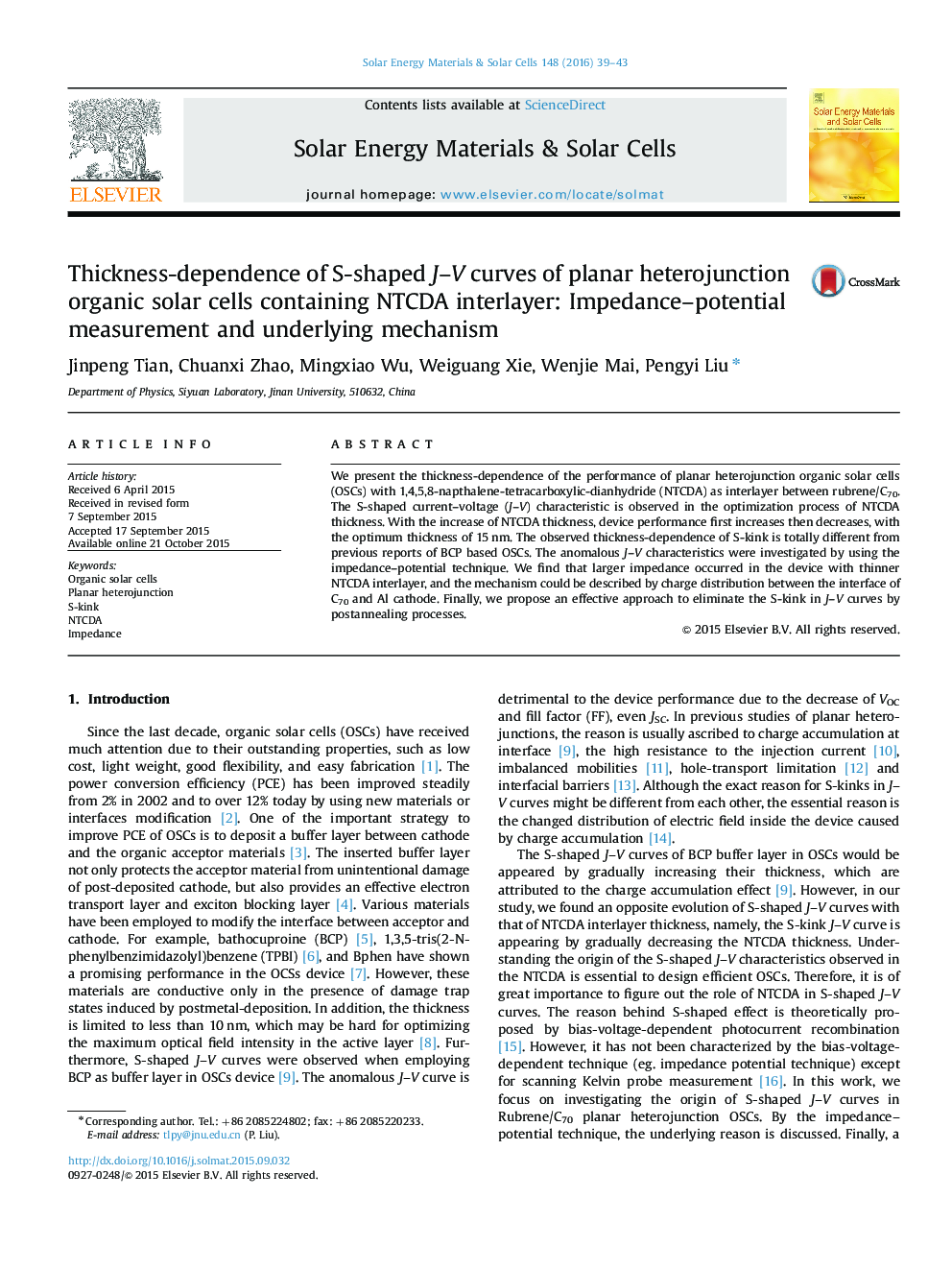| Article ID | Journal | Published Year | Pages | File Type |
|---|---|---|---|---|
| 77628 | Solar Energy Materials and Solar Cells | 2016 | 5 Pages |
•Effects of NTCDA interlayer thickness on the performance of OSCs were investigated.•Anomalous tendency was observed in the thickness-dependent S-kink of J–V curves.•Charge distribution model based on the impedance–potential technique was proposed.•An effective approach was presented to eliminate the S-shape in the J–V curves.
We present the thickness-dependence of the performance of planar heterojunction organic solar cells (OSCs) with 1,4,5,8-napthalene-tetracarboxylic-dianhydride (NTCDA) as interlayer between rubrene/C70. The S-shaped current–voltage (J–V) characteristic is observed in the optimization process of NTCDA thickness. With the increase of NTCDA thickness, device performance first increases then decreases, with the optimum thickness of 15 nm. The observed thickness-dependence of S-kink is totally different from previous reports of BCP based OSCs. The anomalous J–V characteristics were investigated by using the impedance–potential technique. We find that larger impedance occurred in the device with thinner NTCDA interlayer, and the mechanism could be described by charge distribution between the interface of C70 and Al cathode. Finally, we propose an effective approach to eliminate the S-kink in J–V curves by postannealing processes.
